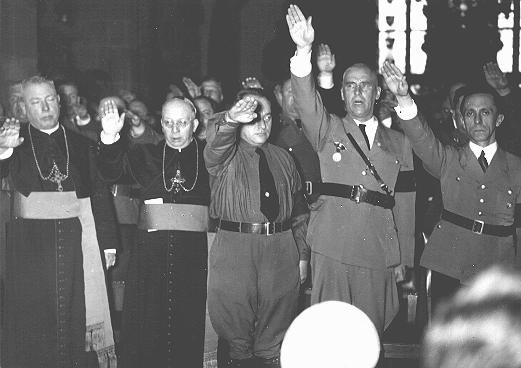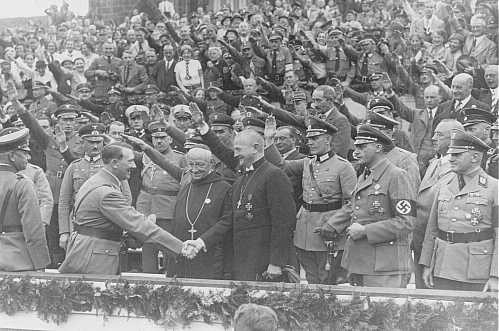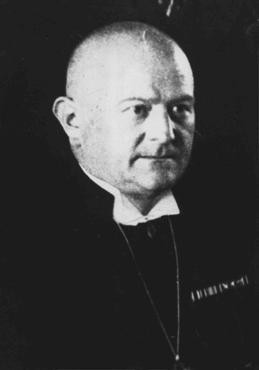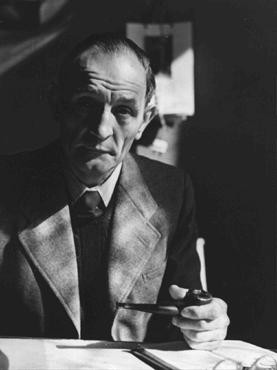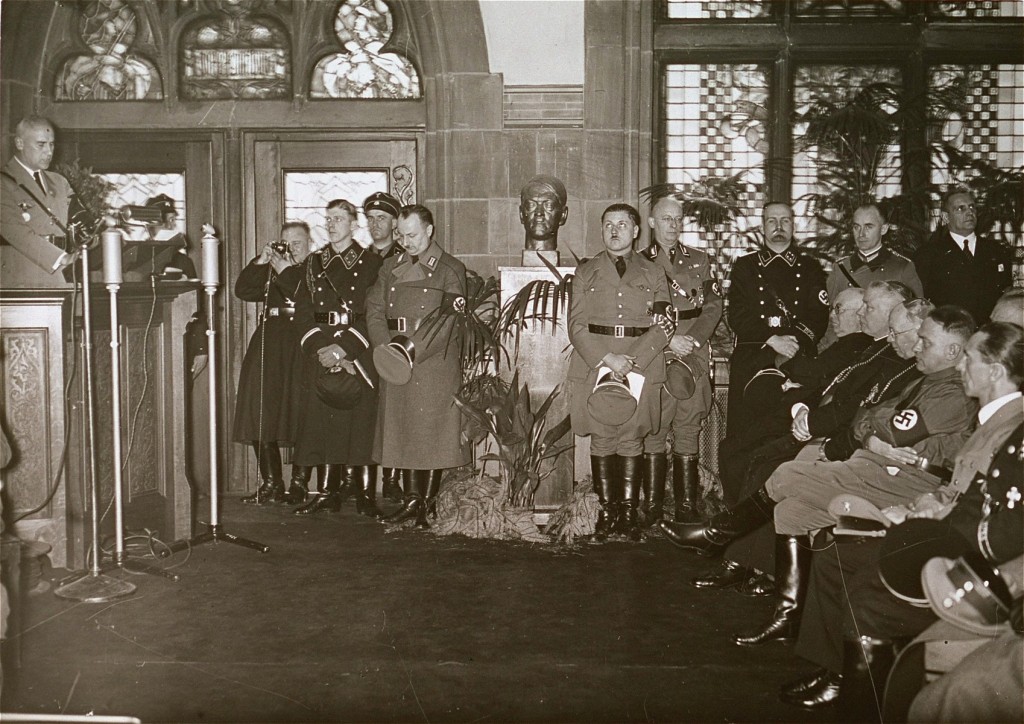
The Role of German Clergy and Church Leaders
Persecution of Jews and other groups was not solely the result of measures originating with Hitler and other Nazi zealots. Nazi leaders required the active help or cooperation of professionals working in diverse fields who in many instances were not convinced Nazis. Church leaders and other members of the conservative elite who were in a position to influence public opinion were all but silent regarding the persecution of Jews.
Key Facts
-
1
Most Christian leaders in Germany supported the rise of Nazism in 1933.
-
2
Church responses to Nazism and the persecution of Jews were shaped by their political and social context. They were also shaped by deep-seated antisemitism within the Christian tradition.
-
3
By not speaking out publicly against the persecution of Jews, especially in the early years of the Nazi regime, Christian leaders shared complicity with other German leaders and professionals.
Leaders and clergy of German Protestant and Roman Catholic churches were to a large degree complicit in the persecution of Jews.
Most Christian leaders in Germany welcomed the rise of Nazism in 1933. They did not speak out against hateful speech or violence. After 1933, most did not speak out against legal measures that progressively stripped Jews of their rights. Some church leaders, particularly within the highly nationalistic “German Christian” movement of the main Protestant church, enthusiastically supported the Nazi regime.
Only a small minority of religious leaders, ministers, and priests, usually in isolated parishes, spoke out against Nazi racism, gave Sunday sermons decrying the persecution of Germany’s Jews, provided aid, or hid Jews. Without the support of their leaders and institutions, voices of dissent had little effect on government policy. Churches across Germany also helped facilitate the implementation of racial laws. They provided people with copies of family baptismal records. The regime used these records to help decide a person's racial status and that of their parents and grandparents.
Church responses to the persecution of Jews were shaped by traditional forms of religious antisemitism with deep roots in Christian history. Clergy and church leaders were also influenced by larger political and social trends in Germany after World War I, including rising nationalism and communist movements. Churches viewed communism as the antithesis of Christianity. They feared a communist revolution, particularly after the Bolshevik Revolution of 1917 in Russia, which led to left-wing revolutionary activities in Germany. Support for the repression of communism and the need to restore Germany’s economy and status as a world power after World War I usually outweighed church leaders’ distaste for the racial, ethnically based nationalist, and pagan views many of them saw in Nazism.
Because of the history of persecution of the Roman Catholic Church in Germany and its moderate political stance prior to 1933 (the Catholic “Center Party” joined Weimar-era coalition governments), Catholic leaders were more suspicious of the Nazi Party. They focused on preserving Catholic institutions, from schools to youth groups. And, like some Protestant churches, they protected baptized members of Jewish descent persecuted under Nazi racial law. Catholic Church leaders openly opposed the forced sterilization of persons with disabilities based on religious doctrine that prohibited interference with reproduction. Some Catholic leaders, as well as Protestant leaders, also spoke out against the killing of institutionalized Germans in the “euthanasia” killing program during wartime.
On November 9–10, 1938, Nazi leaders unleashed a series of pogroms, called Kristallnacht, against the Jewish population in Germany and recently incorporated territories. No prominent church leaders publicly protested these violent assaults. And in this, they shared the complicity of university, business, and military leaders who were also silent during such events even when many disapproved of them. Even if church leaders had spoken out after the violence and terror of Kristallnacht, it was probably too late. By the late 1930s, the Nazi regime had total control of public discourse and public spaces. The tools of repression, from imprisonment in a concentration camp without trial to execution, were already in place.
Critical Thinking Questions
- What pressures and motivations may have influenced church leaders to support or accept Nazi leadership and ideology?
- Investigate the connections between government and organized religion in the history of your country.
- Investigate occasions when religious leaders have questioned the ideology or actions of their government.
- How can knowledge of the events in Germany and Europe before the Nazis came to power help citizens today respond to threats of genocide and mass atrocity in the world?


